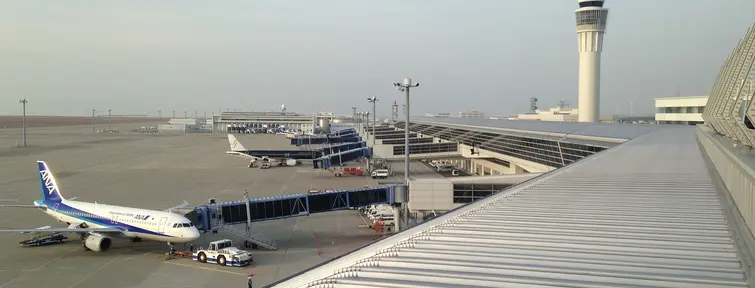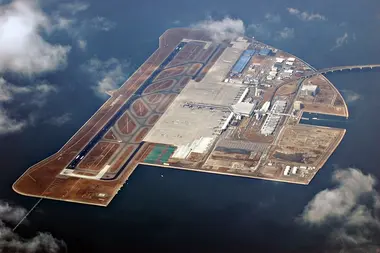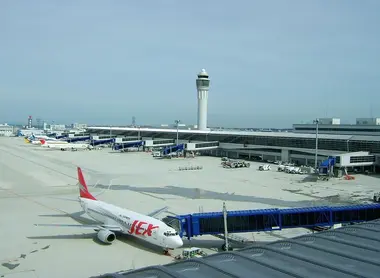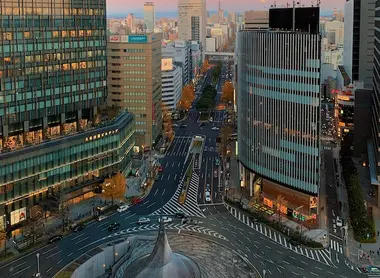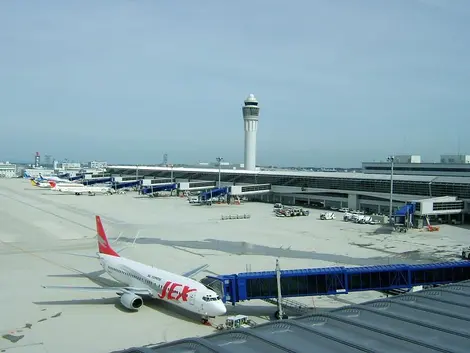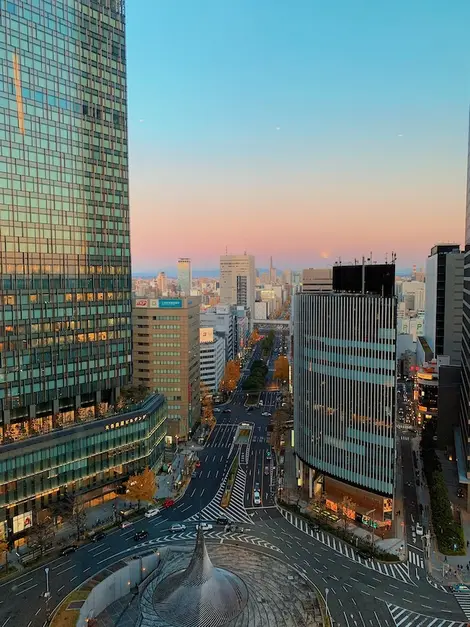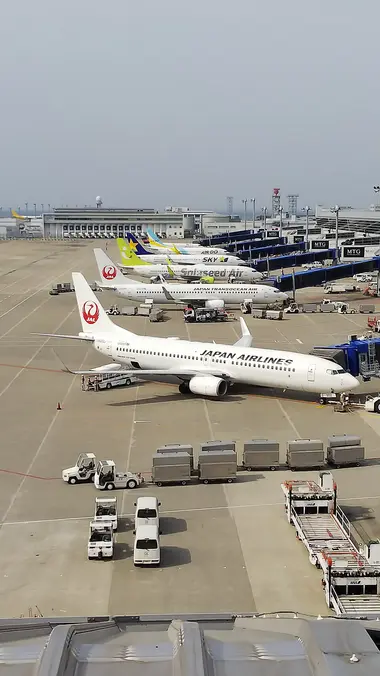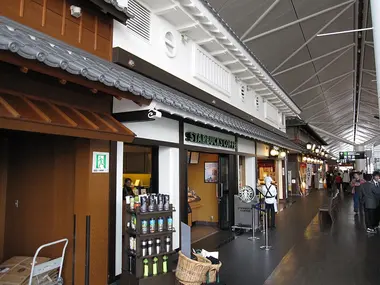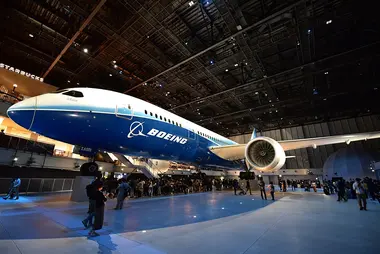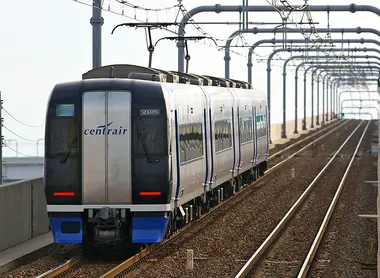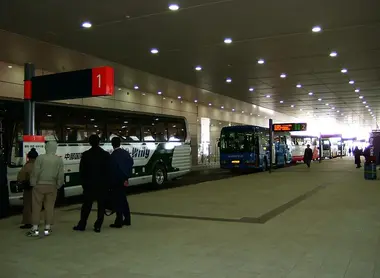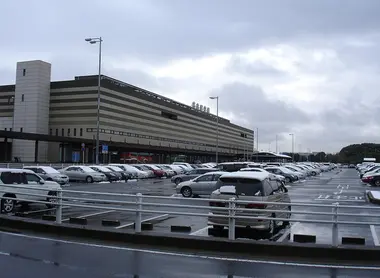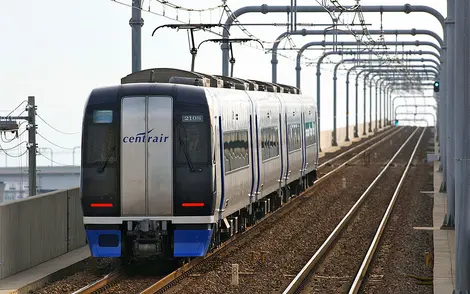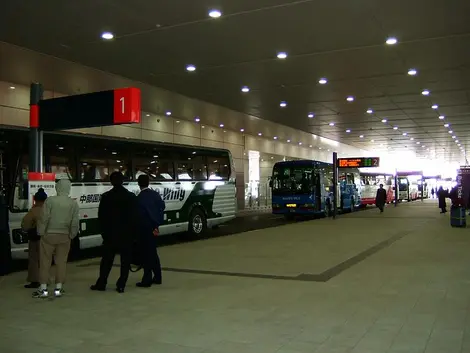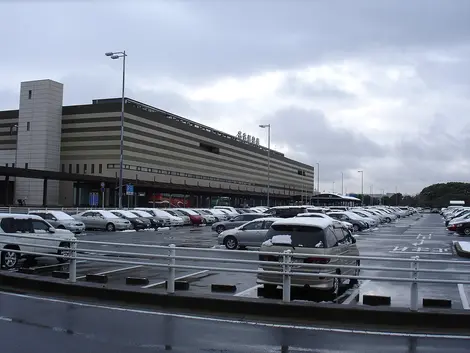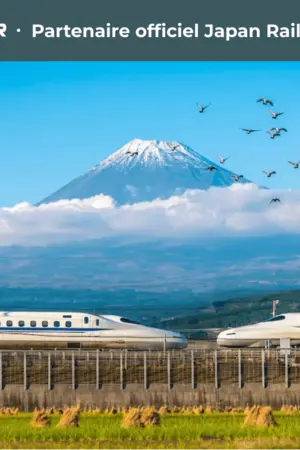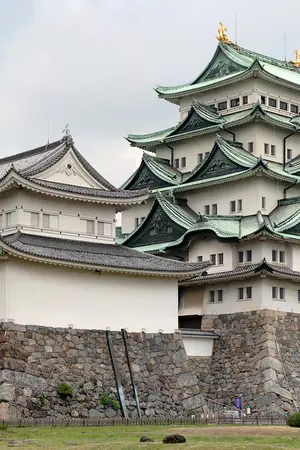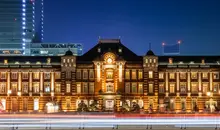Tout savoir sur l’aéroport international de Chubu Centrair
- Publié le : 26/06/2016
- Par : Joshua
- Youtube
Découvrez tout ce qu’il faut savoir sur l’aéroport international de Chubu Centrair. Achetez votre Japan Rail Pass aujourd'hui !
L’aéroport de Chubu Centrair est situé à proximité de Nagoya, dans la préfecture d’Aichi. Placé au centre de l’île de Honshu, il constitue un excellent point de départ et d’accès vers des destinations à travers tout le Japon.
Le mot « chubu » en japonais signifie « central » et la région du Chubu se trouve en plein cœur de l’archipel. Cette région comprend notamment les préfectures d’Aichi, Fukui, Ishikawa, Toyama, Gifu, Nagano, Yamanashi, Shizuoka et bien d’autres.
Pour beaucoup, l’accès à ces préfectures depuis d’autres régions du pays ou depuis l’étranger se fait via l’aéroport international de Chubu Centrair. Sa position centrale en fait également un excellent point de départ pour voyager vers d’autres parties du Japon, sans être trop éloigné des grandes destinations.
Découvrez plus d’informations sur l’aéroport international de Chubu Centrair, l’un des plus importants aéroports du Japon !
Aller et venir au cœur du Japon
L’aéroport international Chubu Centrair est situé à 35 kilomètres au sud de la ville de Nagoya, la troisième plus grande zone métropolitaine du Japon. Il est construit sur une île artificielle dans la baie d’Ise. La société Central Japan International Airport Company en est propriétaire et gestionnaire, et l’aéroport sert également de base opérationnelle à la compagnie aérienne JetStar.
L’aéroport international Chubu Centrair a ouvert en 2005, remplaçant l’ancien aéroport de Nagoya. Il a hérité du code IATA « NGO » de l’ancien aéroport. Il est actuellement le huitième aéroport le plus fréquenté du Japon, desservant environ 10 millions de passagers par an. L’aéroport reçoit régulièrement des distinctions pour la qualité de ses services et de ses installations, figurant souvent parmi les 100 meilleurs aéroports du monde et remportant d’autres prix.
Nagoya est une ville dotée d’une importante industrie manufacturière, accueillant des sites de production pour des entreprises comme Toyota, Mitsubishi et Boeing. De ce fait, l’aéroport international Chubu Centrair facilite de nombreux transports de marchandises.
Terminaux et compagnies aériennes
L’aéroport international Chubu Centrair compte deux terminaux. Le Terminal 1 est le plus grand des deux, il dessert les vols domestiques et internationaux, et propose davantage de boutiques et de services. Le Terminal 2 est principalement destiné aux compagnies low-cost (LCC) qui offrent des vols plus économiques, aussi bien au Japon qu’à l’étranger. Une navette circule entre les deux terminaux.
Un certain nombre de compagnies aériennes proposent des vols domestiques et internationaux à l’aéroport international Chubu Centrair. Les vols domestiques couvrent tout le Japon, depuis Hokkaido, tout au nord, jusqu’à Kyushu, l’île la plus au sud du Japon continental - et même jusqu’à Okinawa.
Voici une liste de quelques compagnies aériennes présentes à l’aéroport :
Compagnies japonaises :
- All Nippon Airways (ANA)
- Japan Airlines (JAL)
- Japan Transocean Air
- Fuji Dream Airlines
- Peach
- Solaseed Air
- Air Do
- et d’autres !
Compagnies étrangères :
- Asian Airlines (à destination et en provenance de Séoul)
- Cebu Pacific (à destination et en provenance de Manille)
- HK Express (à destination et en provenance de Hong Kong)
- Singapore Airlines (à destination et en provenance de Singapour)
- Thai Air AsiaX (à destination et en provenance de Bangkok)
- VietJet Air (à destination et en provenance de Hanoï/Ho Chi Minh)
- United Airlines (à destination et en provenance de Guam)
- et d’autres !
Équipements et boutiques
Au quatrième étage du Terminal 1 se trouve le Sky Town Shopping Center, accessible au grand public, même aux personnes qui ne partent pas ou n’arrivent pas à l’aéroport. La zone Chochin-Yokocho du centre commercial est conçue selon une esthétique japonaise traditionnelle.
Également situé dans l’aéroport, le complexe « Flight of Dreams » est inspiré de la ville américaine de Seattle, dans l’État de Washington. Un Boeing 787 Dreamliner est exposé en pièce maîtresse, car Boeing, à l’origine une entreprise basée à Seattle, réalise une grande partie de sa production à Nagoya.
Des installations typiques d’un aéroport sont aussi disponibles, comme des consignes de stockage et des restaurants. Maruya Honten est un établissement célèbre qui sert le hitsumabushi, un plat emblématique de Nagoya composé d’anguille d’eau douce grillée et ouverte en papillon, coupée puis déposée sur du riz dans une boîte en bois. Ce plat est accompagné d’un assortiment d’accompagnements comme du wasabi, du poivre de montagne japonais, et plus encore.
Comment se rendre à l’aéroport international Chubu Centrair
Situé à proximité d’une grande zone métropolitaine au Japon, l’aéroport international Chubu Centrair est facilement accessible par les transports en commun. Voici quelques-unes des options les plus courantes :
- Train : La station Central Japan International Airport se trouve à proximité de l’aéroport et est accessible via la ligne Meitetsu Airport Line. Cette ligne part de la gare de Nagoya, qui est également une halte pour le Shinkansen opéré par la JR, ce qui la rend facilement accessible depuis des villes comme Tokyo, Kyoto et Osaka. Le trajet de la gare de Nagoya à l’aéroport dure environ 25 à 35 minutes.
- Bus : Les navettes Centrair partent de différents points de Nagoya, de Sakae et des principaux hôtels de la région. Depuis la station de bus Meitetsu, située juste à côté de la gare de Nagoya, le trajet dure un peu moins d’1h30 et coûte 1 200 yens pour les adultes et 600 yens pour les enfants.
Voiture / Taxi* : En voiture, il faut environ 40 à 50 minutes pour aller du centre de Nagoya à l’aéroport international Chubu Centrair. Les taxis pour cette distance seront relativement chers, généralement entre 12 000 yens et 15 000 yens.
*Pour ceux qui souhaitent louer une voiture au Japon, la plupart pourront conduire avec un permis de conduire international ; cependant, les titulaires d’un permis délivré en France, en Suisse, en Allemagne, en Belgique, à Monaco ou à Taïwan devront présenter une traduction officielle japonaise de leur permis. Commandez votre traduction de permis ici.
